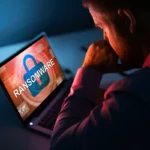
In the ever-evolving landscape of cyber threats, encrypting viruses have emerged as one of the most potent and destructive forms of malware. Also known as ransomware, these malicious programs possess the ability to encrypt files and hold them hostage, demanding a ransom in exchange for their release. In this article, we delve into the world of encrypting viruses, exploring their modus operandi and the mechanisms through which they wreak havoc on unsuspecting victims.
Understanding Encrypting Viruses: Encrypting viruses are a type of malware designed to infiltrate computer systems, encrypt valuable files and data, and render them inaccessible to the user. The term “encrypting” refers to the process of converting data into a cipher or code, making it unreadable without the corresponding decryption key. Cybercriminals behind encrypting viruses employ sophisticated encryption algorithms to ensure the victim’s files remain securely locked until the ransom is paid.
How Encrypting Viruses Work:
- Delivery and Execution: Encrypting viruses typically enter systems through various vectors, including malicious email attachments, compromised websites, or software vulnerabilities. Once the initial infection occurs, the virus remains dormant, often avoiding detection by security software. Upon activation, the virus initiates its malicious activities.
- File Encryption: The virus begins scanning the victim’s system and network drives, searching for specific file types such as documents, images, databases, and more. It then employs strong encryption algorithms, such as AES (Advanced Encryption Standard) or RSA (Rivest-Shamir-Adleman), to encrypt the identified files. During encryption, a unique encryption key is generated and stored securely by the attacker.
- Ransom Note: After encrypting the victim’s files, the encrypting virus displays a ransom note on the user’s screen or places text files in encrypted folders. The note informs the victim about the situation, provides instructions on how to pay the ransom, and often includes threats of permanent file deletion or increased ransom demands if the payment is not made within a specified timeframe.
- Ransom Payment and Decryption: To regain access to their encrypted files, victims are instructed to pay the ransom, usually in a form of cryptocurrency, such as Bitcoin, to the cybercriminals. Once the payment is made, the attackers may provide the decryption key or a decryption tool, allowing the victim to decrypt their files and regain access.
Mitigating Encrypting Viruses: Prevention and preparedness are key to mitigating the impact of encrypting viruses. Here are some essential measures:
- Regular Backups: Maintain regular backups of critical files and store them offline or in secure cloud storage. This ensures that even if files are encrypted, they can be restored without paying the ransom.
- Robust Security Software: Utilize reputable antivirus and antimalware solutions with real-time scanning and threat detection capabilities. Keep them updated to detect and block potential infections.
- Software Updates: Keep operating systems, applications, and plugins up to date, as software vulnerabilities are often exploited by encrypting viruses.
- User Awareness and Training: Educate users about safe online practices, including avoiding suspicious email attachments, refraining from visiting untrusted websites, and being cautious of social engineering tactics.
Encrypting viruses pose a severe threat to individuals, businesses, and organizations worldwide, causing significant financial and reputational damage. Understanding their mechanisms empowers users to adopt proactive measures and strengthen their defenses against such malicious attacks. By prioritizing cybersecurity best practices, vigilance, and staying informed about emerging threats, individuals and organizations can minimize the risk of falling victim to encrypting viruses and protect their valuable data from harm.




Leave a Reply